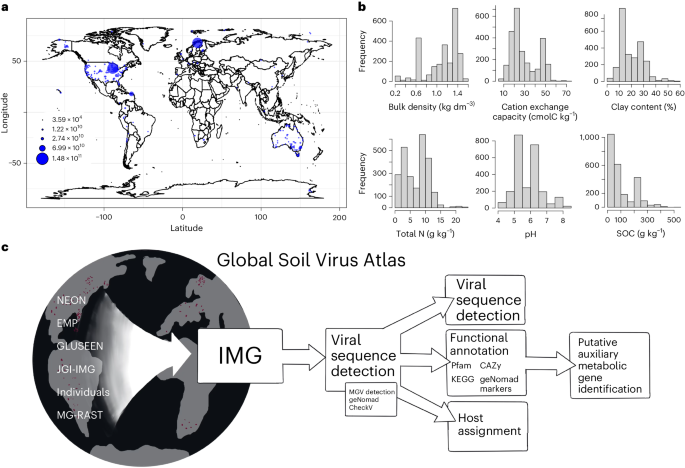2024-07-22 パシフィック・ノースウェスト国立研究所(PNNL)
<関連情報>
- https://www.pnnl.gov/publications/no-one-ring-rule-them-all-different-microbial-traits-influence-soil-carbon-accrual
- https://www.sciencedirect.com/science/article/pii/S0038071724000567?via%3Dihub
土壌の根から鉱物性炭素に至る経路は、生息地特有の微生物形質と土壌水分によって決まる The path from root input to mineral-associated soil carbon is dictated by habitat-specific microbial traits and soil moisture
Noah W. Sokol, Megan M. Foley, Steven J. Blazewicz, Amrita Bhattacharyya, Nicole DiDonato, Katerina Estera-Molina, Mary Firestone, Alex Greenlon, Bruce A. Hungate, Jeffrey Kimbrel, Jose Liquet, Marissa Lafler, Maxwell Marple, Peter S. Nico, Ljiljana Paša-Tolić, Eric Slessarev, Jennifer Pett-Ridge
Soil Biology and Biochemistry Available online: 20 February 2024
DOI:https://doi.org/10.1016/j.soilbio.2024.109367

Highlights
- Microbial traits associated with mineral-associated SOC varied by soil habitat.
- In the rhizosphere, fast growth and high yield were positively associated with SOC.
- The detritusphere community had slower growth and greater exoenzyme activity than the rhizosphere community.
- 13C-qSIP showed most C assimilation was performed by very few active taxa.
- Chemical composition of SOC was more oxidized in the rhizosphere than the detritusphere.
Abstract
Soil microorganisms help transform plant inputs into mineral-associated soil organic carbon (SOC) – the largest and slowest-cycling pool of organic carbon on land. However, the microbial traits that influence this process are widely debated. While current theory and biogeochemical models have settled on carbon-use efficiency (CUE) and growth rate as positive predictors of mineral-associated SOC, empirical tests are sparse, with contradictory observations. Using 13C-labeling of an annual grass (Avena barbata) under two moisture regimes, we found that microbial traits associated with formation of 13C-mineral-associated SOC varied by soil habitat, as did active microbial taxa and SOC chemical composition. In the rhizosphere, bacterial-dominated communities with fast growth, high biomass, and high extracellular polymeric substance (EPS) production were positively associated with 13C-mineral-associated SOC. In contrast, the detritusphere held communities dominated by fungi and more filamentous bacteria, and with greater exoenzyme activity; there, 13C-mineral-associated SOC was associated with slower microbial growth and lower microbial biomass. CUE was a negative predictor of 13C-mineral-associated SOC in both habitats. Using 13C-quantitative stable isotope probing, we found that the majority of 13C assimilation in the rhizosphere and detritusphere at week 12 of the experiment was performed by very few bacterial and fungal taxa (3–5% of the total taxa that assimilated 13C). Several complementary chemical analyses (13C-NMR, FTICR-MS, and STXM-NEXAFS) suggested that SOC in the rhizosphere had a more oxidized chemical signature, while SOC in the detritusphere had a less oxidized, more lignin-like chemical signature. Our findings challenge current theory by demonstrating that microbial traits linked with mineral-associated SOC are not universal, but vary with soil habitat and moisture conditions, and are shaped by a small number of active taxa. Emerging SOC models that explicitly reflect these interactions may better predict SOC storage, since climate change causes shifts in soil moisture regimes and the ratio of living versus decaying roots.


